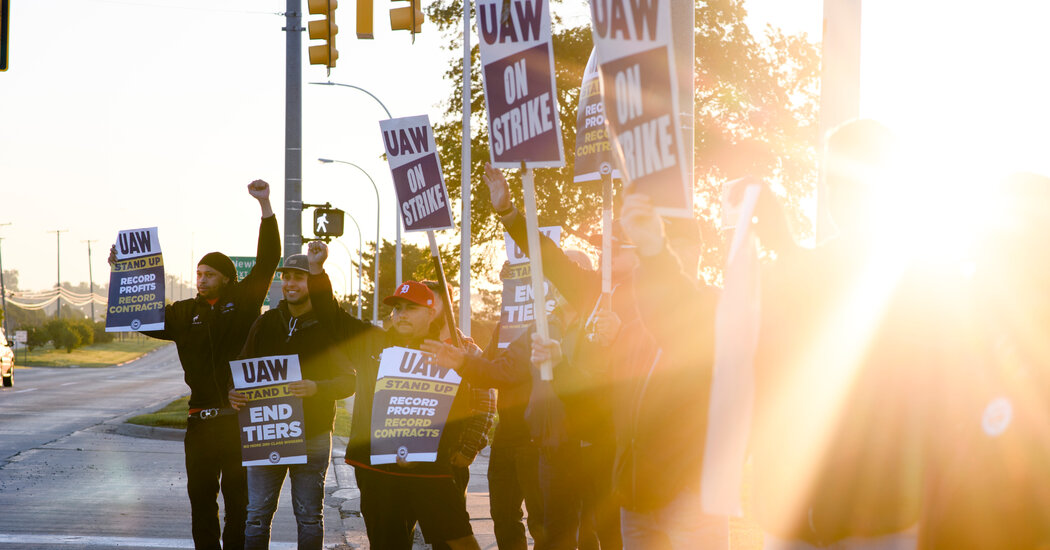Goldman Sachs Sticks the Landing at End of Tumultuous Year
Goldman Sachs on Tuesday reported its second consecutive quarter of steady profits, a return to form for the bank that has struggled with management missteps that tarnished its once untouchable reputation on Wall Street.
The bank’s fourth-quarter profit of $2 billion was roughly equal to what it earned in the third quarter, but that was a sign of accomplishment. Until recently, the bank had been dogged by a drumbeat of losses from its unsuccessful stab at consumer banking and soured real estate portfolio, among other problems.
Helping the bottom line: Goldman cut 3,200 employees over the course of 2023, a 7 percent trim in its head count. It is on a long list of multinational companies that have cast off staff in recent months.
Goldman’s stock rose about 1 percent in trading before the market open, which would add to its roughly 8 percent gain over the past year. But shares are still lower than their 2021 peak and the bank’s full-year profit of $8.5 billion last year was the lowest since 2019.
Goldman’s chief executive, David M. Solomon, credited the bank’s “clear and simplified” strategy with helping right the ship in recent months.
Mr. Solomon is correct that his organization is charting a different course. The bank has scrambled to wind down its consumer ambitions, and instead is relying again on its traditional work of facilitating trading for big-money customers, charging fees for advising on mergers, arranging bond issues and the like.
That strategy leaves its quarterly profits tied more closely to the whims of the financial markets — indeed, the bank made significantly less last year than it did in 2022, thanks in part to an industrywide slowdown in corporate advisory work — but it also means the bank more closely resembles the venerable Goldman Sachs of yore.
Mr. Solomon has also pinned hopes on an expansion of the bank’s asset management operation, a relatively low margin but steady business.
Last week, some of Goldman’s rivals reported a mixed set of quarterly results, clouded in part by hefty government-ordered costs to replenish a federal insurance fund depleted by a crisis at midsize banks last year. (Goldman poured $529 million into the fund last quarter.)
Still, JPMorgan Chase, Bank of America and Wells Fargo generated billions of dollars in profit, beating analysts’ expectations.
Given its recent struggles, Goldman may take solace that the new straggler of the industry appears to be Citigroup, whose headquarters are just a few blocks north of Goldman’s in Lower Manhattan. Citi last week revealed a big loss and plans to cut about 10 percent of its work force, or about 20,000 people, as part of a major restructuring.


